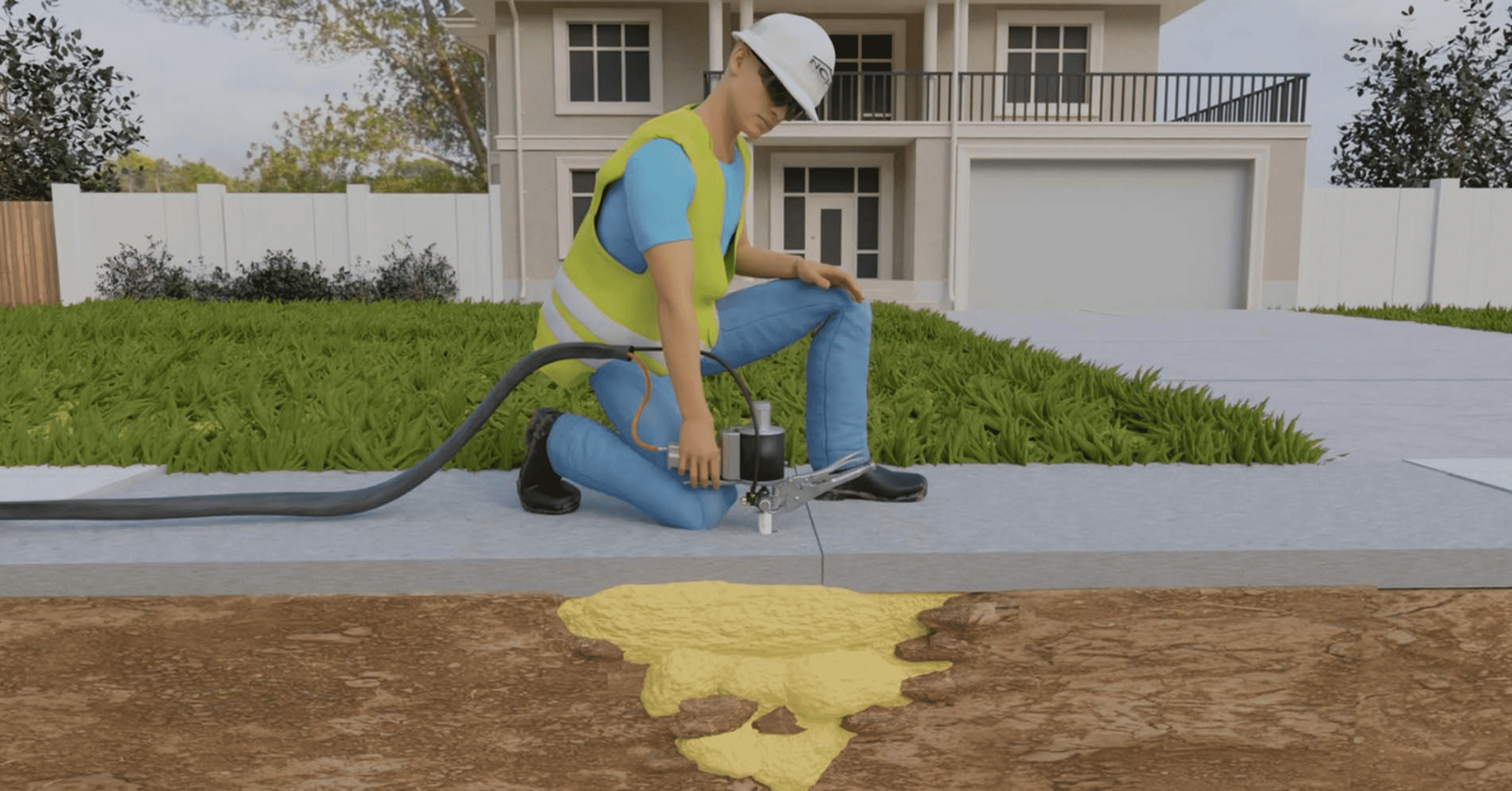Navigating Your Sidewalk Needs: Understanding Costs and Repair Options in the USA
Your sidewalks are more than just pathways; they are vital arteries of your community, connecting neighbors, facilitating strolls, and enhancing...

Your sidewalks are more than just pathways; they are vital arteries of your community, connecting neighbors, facilitating strolls, and enhancing the overall aesthetic and accessibility of your property. However, like any part of your infrastructure, concrete sidewalks are susceptible to wear and tear over time, leading to potential safety hazards and diminished curb appeal. Understanding the costs associated with both new installations and necessary repairs is crucial for homeowners, property managers, and community associations across the USA. This article will delve into the factors influencing concrete sidewalk cost and explore various repair options, empowering you to make informed decisions for your sidewalk needs.
The Importance of Well-Maintained Sidewalks
Before diving into the specifics of cost and repair, it’s essential to recognize the significance of maintaining your sidewalks. Neglecting repair sidewalk can lead to a host of problems, including:
- Safety Hazards: Cracks, uneven surfaces, and potholes pose tripping hazards for pedestrians, potentially leading to serious injuries and liability issues.
- Accessibility Issues: Damaged sidewalks can hinder the mobility of individuals using wheelchairs, walkers, or strollers, violating accessibility standards and creating barriers within the community.
- Decreased Property Value: A cracked and dilapidated sidewalk detracts from the overall appearance of your property and can negatively impact its market value.
- Code Violations: Many municipalities have regulations requiring property owners to maintain adjacent sidewalks in a safe condition. Failure to do so can result in fines and legal action.
- Water Damage: Cracks in concrete can allow water to seep into the sub-base, leading to further erosion, instability, and accelerated deterioration of the sidewalk.
Investing in timely repairs and proper maintenance not only mitigates these risks but also contributes to a safer, more accessible, and visually appealing community.
Understanding Concrete Sidewalk Cost: Factors at Play
The cost of installing a new concrete sidewalk can vary significantly depending on several key factors. Understanding these variables will help you obtain more accurate estimates and budget effectively for your project.
1. Size and Scope of the Project
Unsurprisingly, the most significant factor influencing the cost is the size of the sidewalk you need. This includes:
- Length: Longer sidewalks naturally require more materials and labor, increasing the overall cost.
- Width: Wider sidewalks necessitate a larger volume of concrete and may require additional reinforcement.
- Thickness: The required thickness of the concrete slab depends on the anticipated foot traffic and potential for heavier loads (e.g., occasional light vehicles). Residential sidewalks typically range from 4 to 6 inches thick.
- Complexity of Design: Straight, simple sidewalks are generally less expensive than those with curves, steps, or intricate patterns.
2. Material Costs
The price of concrete itself is a significant component of the overall cost. Concrete prices can fluctuate based on:
- Local Market Conditions: Supply and demand in your specific geographic area will influence pricing.
- Aggregate Type: Different types of aggregate (sand, gravel, crushed stone) used in the concrete mix can have varying costs.
- Admixtures: Special additives used to enhance concrete properties (e.g., strength, workability, freeze-thaw resistance) can add to the material cost.
- Reinforcement: Depending on the expected load and soil conditions, wire mesh or rebar may be required for added strength, increasing material costs.
3. Labor Costs
Labor costs constitute a substantial portion of the total expense. Factors influencing labor include:
- Local Labor Rates: Hourly rates for concrete contractors vary depending on your location and the prevailing wage in your area.
- Project Complexity: More intricate designs and challenging site conditions will require more skilled labor and time, increasing labor costs.
- Site Preparation: The amount of excavation, grading, and formwork required will impact labor hours.
- Finishing Work: Different finishing techniques (e.g., broom finish, exposed aggregate) can require varying levels of labor.
4. Site Conditions and Accessibility
The characteristics of your property can also affect the cost:
- Slope and Terrain: Uneven terrain may require additional grading and excavation, increasing labor and potentially material costs.
- Accessibility: Difficult access to the work area can make it harder to transport materials and equipment, potentially adding to labor time.
- Soil Conditions: Unstable or expansive soil may necessitate additional preparation or reinforcement measures.
- Obstacles: Existing landscaping, trees, or underground utilities that need to be worked around can increase the complexity and cost of the project.
5. Permits and Inspections
Most municipalities require permits for new sidewalk installations. The cost of these permits can vary depending on your location. Additionally, inspections may be required at different stages of the project, which can also involve fees.
6. Demolition and Removal (if applicable)
If you are replacing an existing sidewalk, the cost of demolition and removal of the old concrete will need to be factored into the overall project cost.
Estimating Concrete Sidewalk Cost: What to Expect
While it’s difficult to provide a precise figure without knowing the specifics of your project and location, here’s a general idea of what you might expect for concrete sidewalk costs in the USA:
- New Installation: The cost for new concrete sidewalk installation typically ranges from $6 to $15 per square foot. This includes materials, labor, and basic site preparation. More complex designs, thicker concrete, or challenging site conditions can push the cost towards the higher end of this range.
- Factors that can increase the cost:
- Decorative finishes (stamping, staining)
- Integral coloring of the concrete
- Extensive site preparation or excavation
- Reinforcement with rebar
- Complex designs with curves or steps
- Difficult site access
It’s crucial to obtain multiple quotes from reputable local concrete contractors to get an accurate estimate for your specific project. Be sure to ask for a detailed breakdown of the costs, including materials, labor, permits, and any other associated fees.
Repairing Your Existing Sidewalk: Cost-Effective Solutions
In many cases, minor damage to your sidewalk can be repaired rather than requiring a full replacement, saving you significant costs. Here are some common sidewalk repair methods and their general cost considerations:
1. Crack Repair
Small cracks (less than ¼ inch wide) can often be filled with concrete crack filler or epoxy. This is a relatively inexpensive DIY solution for minor aesthetic issues and preventing water infiltration. Professional crack repair using more durable materials and techniques will have a higher cost but offer a longer-lasting solution.
- DIY Cost: $10 – $50 per tube or container of crack filler.
- Professional Cost: $50 – $150+ per crack, depending on length and complexity.
2. Concrete Patching
For larger cracks, spalled areas (surface flaking), or minor potholes, concrete patching is a common repair method. This involves cleaning the damaged area and applying a new concrete mix or patching compound.
- DIY Cost: $20 – $100+ for patching materials, depending on the size and type of patch.
- Professional Cost: $100 – $500+ per patch, depending on the size and depth of the damage and labor involved.
3. Mudjacking or Slab Jacking
This technique is used to lift sunken concrete slabs back to their original level. Holes are drilled into the slab, and a grout mixture is pumped underneath to fill voids and raise the concrete. This is a more cost-effective alternative to replacement for uneven sidewalks.
- Professional Cost: $300 – $1,000+ per slab, depending on the size and the extent of the sinking.
4. Grinding or Trip Hazard Removal
Minor height differences between adjacent concrete slabs that create tripping hazards can sometimes be resolved by grinding down the higher slab to create a smooth, even surface.
- Professional Cost: $100 – $400+ per trip hazard, depending on the size and complexity.
5. Resurfacing
For sidewalks with widespread surface damage but a structurally sound base, resurfacing can be an option. This involves applying a thin layer of new concrete or a specialized overlay material over the existing surface.
- Professional Cost: $3 – $8+ per square foot, depending on the materials used and the complexity of the project.
When is Repair the Right Choice vs. Replacement?
Deciding whether to repair or replace your sidewalk depends on the extent and nature of the damage. Consider the following factors:
- Severity of Damage: Minor cracks and spalling can often be repaired. Extensive cracking, large potholes, significant sinking, or structural instability may necessitate replacement.
- Age of the Sidewalk: Older sidewalks may have underlying issues that make repairs a temporary fix. Replacement might be a more cost-effective long-term solution.
- Number and Location of Damage: Multiple significant damaged areas might make replacement a more efficient and cost-effective approach than numerous individual repairs.
- Underlying Issues: If the damage is caused by underlying issues like poor drainage or root intrusion, addressing these problems is crucial before any repair or replacement.
- Budget: While replacement is generally more expensive upfront, it can prevent future repair costs and increase property value more significantly.
It’s always advisable to consult with a qualified concrete contractor to assess the damage and recommend the most appropriate and cost-effective solution for your specific situation.
Choosing the Right Concrete Contractor
Selecting a reputable and experienced concrete contractor is essential for both new installations and repairs. Here are some tips for choosing the right professional:
- Get Multiple Quotes: Obtain at least three bids from different contractors to compare pricing and services.
- Check Credentials and Licensing: Ensure the contractor is properly licensed and insured in your state and local area.
- Review Their Portfolio: Ask to see examples of their previous work to assess the quality of their craftsmanship.
- Read Online Reviews and Testimonials: Check online review platforms and ask for references from past clients.
- Verify Insurance Coverage: Confirm that the contractor has adequate liability and workers’ compensation insurance.
- Get a Detailed Contract: Ensure the contract clearly outlines the scope of work, materials to be used, payment schedule, and warranty information.
- Ask Questions: Don’t hesitate to ask questions about their process, materials, and timeline.
Investing in Your Community’s Walkways
Maintaining and repairing your concrete sidewalks is an investment in the safety, accessibility, and aesthetic appeal of your property and your community. By understanding the factors influencing concrete sidewalk cost and the various repair options available, you can make informed decisions that protect your investment and contribute to a more vibrant and functional neighborhood. Whether you need a new sidewalk installed or require repairs to an existing one, partnering with a qualified concrete contractor will ensure a durable and long-lasting solution for your needs. Remember to prioritize safety and address any sidewalk damage promptly to prevent further deterioration and potential hazards.


